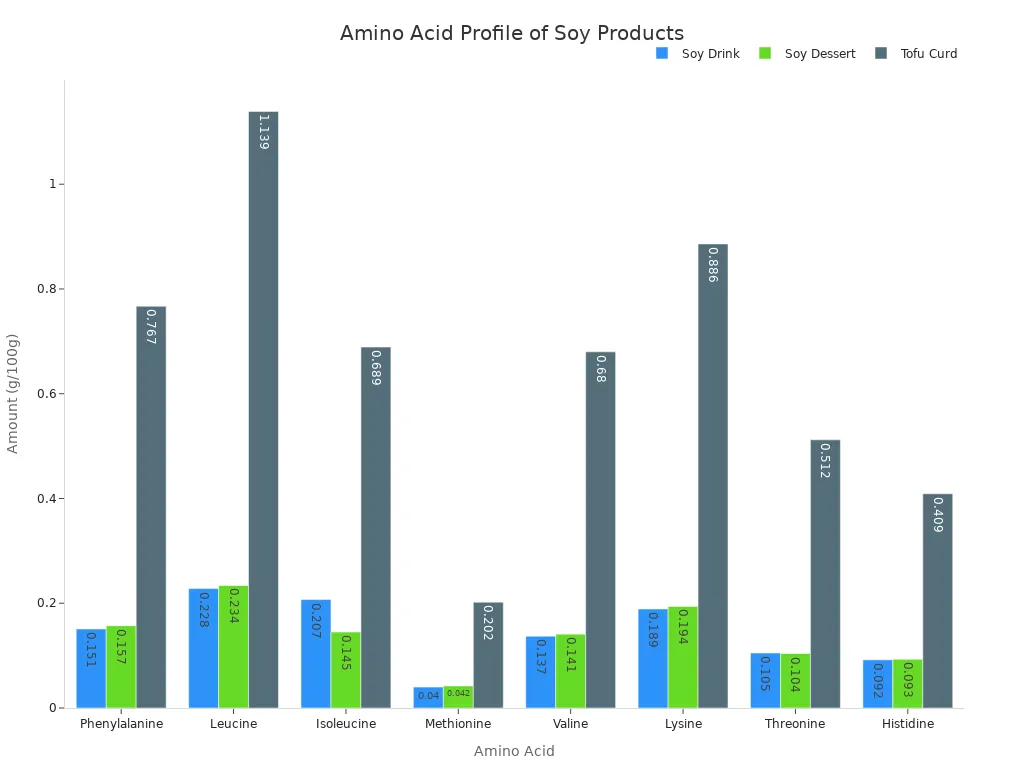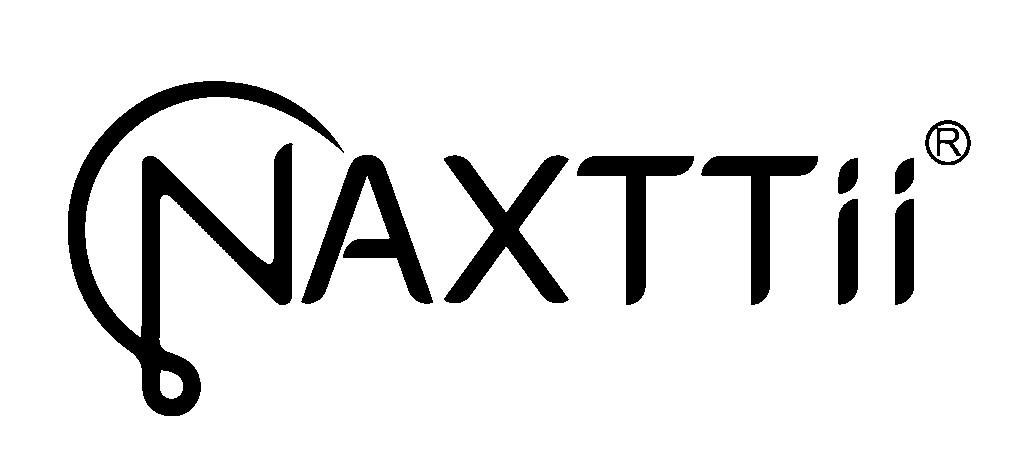Your Guide to Soy Culinary Myths
Table of Contents

Moderate amounts of whole soy foods are safe and beneficial for most people’s health. Human studies confirm soy can lower heart disease risk. Despite this, confusion leads to common myths about soy. These culinary myths create questions about this popular food. This guide separates fact from myth. The goal is to provide clarity on the science behind soy, using fact to address each myth. This helps people understand the real story of soy.
Did You Know? 💡 The global market for soy-based products is growing rapidly. It is projected to reach nearly USD 29 billion by 2033, driven by consumer interest in the health and sustainability benefits of soy.
COMMON MYTHS ABOUT SOY: HORMONES AND HEALTH
The most persistent culinary myths about soy revolve around its effects on health, particularly hormones. These concerns often stem from a misunderstanding of compounds in soy called isoflavones. Let’s separate fact from fiction.
BREAST CANCER CONCERNS
A common myth suggests that soy consumption increases breast cancer risk. This idea comes from the fact that soy contains isoflavones, which are plant estrogens. However, plant estrogens and human estrogen behave very differently in the body. Research shows isoflavones interact with human estrogen receptors in a unique way. They prefer to bind to a receptor known as ER-beta. This is significant because activating ER-beta can have protective, anti-cancer effects, unlike the ER-alpha receptor, which is more involved in cancer cell growth. This fact helps explain why dietary soy is linked to positive health outcomes.
Large-scale human studies confirm this protective role. A major meta-analysis of many prospective studies found a clear link between higher soy isoflavone intake and a reduced risk of breast cancer. This protective effect appeared in both pre-menopausal and post-menopausal women. The research on soy and breast cancer risk is extensive. The American Cancer Society states that soy foods are safe for breast cancer survivors. Their research concludes that soy consumption is associated with either a decreased risk or no change in cancer risk. Early animal studies that raised alarms used extremely high doses of isolated isoflavones, and rodents metabolize these compounds differently than humans.
Fact Check: Soy Intake Levels 🔬 In many Asian countries, where breast cancer rates are historically lower, moderate soy consumption is a dietary staple. Research shows typical daily isoflavone intake can range from:
- 9.4 mg/day (average in some large Chinese studies)
- 20-40 mg/day (in higher consumption groups)
This level of dietary intake from whole soy foods is considered safe and beneficial. The evidence from human population studies and major health organizations supports the fact that this myth is unfounded. Similar research points to benefits for prostate health, as studies show isoflavones may help reduce the risk of prostate cancer.
MALE HORMONE EFFECTS
Another widespread myth claims that soy lowers testosterone and causes feminizing effects in men. This concern is one of the most studied culinary myths, and the scientific consensus is clear. An updated and expanded meta-analysis of 41 clinical studies involving over 1,700 men delivered a decisive verdict. The research found that neither soy protein nor isoflavone supplements had any significant effect on testosterone, free testosterone, or estrogen levels in men. This fact holds true regardless of the dose or how long the studies lasted.
Further research reinforces these findings.
- Clinical studies show that isoflavones do not cause feminizing effects in men, even at intake levels much higher than those typical in Asian diets.
- There is no credible evidence that soy exposure affects circulating estrogen levels in men.
- Intervention studies conclude that isoflavones do not harm sperm or semen parameters.
Some confusion arose from a single 2008 observational study that suggested a link between soy intake and lower sperm concentration. However, follow-up research on men undergoing fertility treatments found that a man’s soy consumption was unrelated to fertilization rates or live birth outcomes. Multiple intervention studies have since confirmed that soy does not negatively affect semen quality. The overwhelming body of research shows this myth is false. The focus on soy’s hormonal effects has also led to extensive research on prostate cancer, with many studies suggesting a diet rich in soy may lower prostate cancer risk. This is an important area of ongoing research for men’s health.
THYROID FUNCTION
The final myth we will address is that soy harms thyroid function. For the vast majority of people, this is not true. A 2006 review of 14 clinical trials concluded that neither soy nor isoflavones impact thyroid function in people with healthy thyroids and adequate iodine intake. A later meta-analysis found that soy supplementation caused a very modest rise in Thyroid-Stimulating Hormone (TSH), but the increase was so small that its clinical importance is unclear. The fact is, for a healthy thyroid, soy is not a problem.
The confusion often arises from a separate, manageable issue: medication absorption. Soy can interfere with the body’s ability to absorb synthetic thyroid medication, such as levothyroxine. This is not unique to soy; other foods and supplements, like calcium and iron, can have similar effects. This interaction does not mean soy is harmful to the thyroid itself. It simply means timing matters.
Pharmacist’s Tip 💊 For individuals taking thyroid medication, experts recommend a simple solution. Wait at least three to four hours after taking your medication before consuming any soy products. This allows your body to fully absorb the medicine without interference.
This practical step ensures that people with thyroid conditions can still enjoy the health benefits of soy without compromising their treatment. The myth confuses an absorption issue with a direct negative effect on health, but the research clarifies the distinction.
NUTRITIONAL QUALITY AND DIGESTION
Beyond hormones, a second category of culinary myth questions the nutritional value of soy. Critics often point to “antinutrients” or digestibility issues. However, a closer look at the science reveals that whole and minimally processed soy foods are a nutritional powerhouse. This section examines the facts about soy’s nutritional profile, how the body absorbs its nutrients, and its overall digestibility.
THE NUTRITION OF SOY
Soybeans are one of the most nutritionally complete plant foods available. A key reason for this is their high-quality soy protein. Foods that provide all nine essential amino acids—the building blocks of protein that the body cannot make itself—are called complete proteins. Soy is a rare plant-based example of a complete protein.
These essential amino acids include:
- Histidine
- Isoleucine
- Leucine
- Lysine
- Methionine
- Phenylalanine
- Threonine
- Tryptophan
- Valine
The amino acid profile of soy protein is very similar to that of animal protein. Research shows different soy products offer these proteins in varying amounts. Tofu, for instance, has a much higher concentration of these amino acids compared to soy drinks or desserts.

The following table provides a more detailed look at the amino acid content in several soy products.
| Amino Acid | Soy Drink (g/100g) | Soy Dessert (g/100g) | Tofu Curd (g/100g) |
|---|---|---|---|
| Phenylalanine | 0.151 | 0.157 | 0.767 |
| Leucine | 0.228 | 0.234 | 1.139 |
| Isoleucine | 0.207 | 0.145 | 0.689 |
| Methionine | 0.040 | 0.042 | 0.202 |
| Valine | 0.137 | 0.141 | 0.680 |
| Lysine | 0.189 | 0.194 | 0.886 |
| Threonine | 0.105 | 0.104 | 0.512 |
| Histidine | 0.092 | 0.093 | 0.409 |
Beyond protein, dietary soy offers other important nutrients. A 100-gram serving of firm tofu is a good source of several key minerals and fiber.
| Nutrient | Amount (100g Firm Tofu) |
|---|---|
| Fiber | 2.3g |
| Iron | 2.7mg |
| Magnesium | 58mg |
Different soy foods also vary in their protein density. Fermented soy products like tempeh are particularly protein-rich. A three-ounce serving of tempeh packs double the soy protein of the same amount of extra-firm tofu, making it an excellent choice for a high-protein dietary addition.
ANTINUTRIENTS AND ABSORPTION
A persistent myth about soy involves compounds called antinutrients. These substances are found in many plant foods, including raw soybeans. The two main types in soy are:
- Phytic acid (Phytate): This compound can bind to minerals like iron, zinc, and calcium, which may reduce their absorption.
- Trypsin inhibitors: These proteins can interfere with digestive enzymes, potentially reducing soy protein digestion.
This myth overlooks a crucial fact: humans rarely eat raw soybeans. Standard preparation methods like soaking, cooking, and fermenting dramatically reduce or deactivate these antinutrients. Numerous studies confirm that cooking breaks down heat-sensitive compounds like trypsin inhibitors. Fermentation, the process used to make tempeh and miso, is another highly effective strategy. Microorganisms used in fermentation produce enzymes that break down phytic acid, improving the overall nutritional quality of the soy.
Pro Tip: Preparation is Key 🧑🍳 Soaking soybeans before cooking helps leach out antinutrients. Fermentation, used to make foods like tempeh, miso, and natto, is one of the most effective ways to reduce phytates and improve nutrient bioavailability.
Concerns about mineral absorption are also largely overstated for people with a balanced dietary plan. While phytic acid can inhibit iron and zinc absorption during a single meal, studies show this effect is minor in the context of a varied diet. In fact, some studies suggest that with regular soy consumption, the body adapts, and the negative effect of phytate on iron absorption is reduced. Furthermore, research shows calcium absorption from calcium-set tofu and calcium-fortified soymilk is comparable to that of cow’s milk. For most people, the health benefits of including nutrient-dense plants in their diet far outweigh any concerns about antinutrients. Some research even suggests phytates have positive health effects, including antioxidant and anti-inflammation properties.
DIGESTIBILITY AND BLOATING
Some people report experiencing gas and bloating after eating soy. This is not a sign that soy is unhealthy but is related to specific carbohydrates.
Humans lack the enzyme needed to break down these particular sugars in the small intestine. They pass undigested to the large intestine, where gut bacteria ferment them, producing gas. People who are sensitive can find relief with fermented soy foods like tempeh, where the fermentation process has already broken down many of these sugars.
Regarding protein, the digestibility of soy protein is exceptionally high. Scientists use a measure called the Protein Digestibility Corrected Amino Acid Score (PDCAAS) to rate protein quality. A score of 1.0 is the highest possible. Animal proteins like whey and casein score a 1.0. High-quality soy protein isolate scores a 0.98, making it nearly identical.
| Protein Type | PDCAAS |
|---|---|
| Casein | 1.0 |
| Whey | 1.0 |
| Soy | 0.98 |
This high score confirms that the body can efficiently absorb and use the amino acids from soy. While many believe fermented soy foods are easier to digest, studies show that the protein in non-fermented soy like tofu is already very well digested. Clinical studies have not found a significant advantage for consuming fermented over non-fermented soy for long-term health outcomes. The high digestibility of soy protein is one of its greatest benefits. A regular soy intake can be a valuable part of a healthy lifestyle.
PROCESSED VS. WHOLE SOY FOODS

Not all soy foods are created equal. A common myth suggests that any processing makes soy unhealthy. The reality is more nuanced. The distinction between traditional preparation and modern, intensive processing is key to understanding the nutritional value of soy. This section explores how different methods affect the final product.
TRADITIONAL VS. MODERN PROCESSING
Traditional soy foods have a long history of safe use. For centuries, cultures in Asia developed unique methods to prepare soy. Japanese food culture, for example, created fermented products like miso and soy sauce. Ancient Chinese texts from over 1,500 years ago detail recipes for fermented soy jiang. These traditional processes, including cooking and fermentation, make soy more digestible and nutritious. Fermented soy is a cornerstone of many healthy diets.
Modern processing creates products like soy protein isolate. This process strips away most of the soybean’s original components to create a product that is almost pure soy protein. While this boosts the soy protein content, it removes valuable nutrients.
Whole vs. Isolate: A Nutritional Snapshot 📊 A comparison shows the trade-offs between whole and highly processed soy:
- Whole Soybeans: Offer a balanced mix of soy protein, fiber, fats, and minerals.
- Soy Protein Isolate: Contains over 90% soy protein but has minimal fiber and reduced levels of other nutrients like isoflavones.
This myth fails to distinguish between beneficial traditional methods and modern industrial ones. A varied dietary soy intake that includes whole and fermented soy foods provides the most benefits. The long history of fermented soy consumption supports its role in a healthy diet.
SOY-BASED INFANT FORMULA
Concerns about soy-based infant formula represent another significant myth. Parents often worry about the hormonal effects of soy on their babies. However, extensive scientific studies provide reassurance. Major health organizations consider soy formula a safe option for most full-term infants who require it.
Long-term studies have tracked children fed soy formula from birth.
- One major study followed children for over five years. It found that infants fed soy formula grew and developed normally, with no adverse effects compared to breastfed or milk-fed infants.
- Another large national study in Korea investigated neurodevelopment. The research found no link between soy formula and risks for conditions like ADHD, ASD, or developmental delays.
These large-scale studies show that soy formula supports normal growth. The overwhelming evidence from numerous studies indicates that modern soy formula is a safe and effective alternative when necessary. Researchers continue to conduct studies to understand all aspects of soy consumption, including how soy protein might affect metabolism.
Scientific fact proves the biggest culinary myths about soy are unfounded. Soy is a nutrient-dense food, a fact that highlights the many health benefits of soy. Soy offers complete soy protein and other benefits for health. This guide separates fact from the soy myth. A final fact is that people can easily add soy foods to their diet. These culinary myths should not stop anyone from enjoying soy.
Easy Soy Ideas 🥗
- Add edamame (a whole soy food) to a salad.
- Use tempeh (fermented soy) in a stir-fry.
- Try a tofu scramble (a classic soy dish) for breakfast.
Enjoy the benefits of soy!
FAQ
Does soy increase breast cancer risk?
A meta-analysis shows soy does not cause breast cancer. It may even lower breast cancer risk. This meta-analysis on soy and cancer is clear. The research on the breast is positive. This cancer is not linked to soy. The breast is safe.
Is soy safe for menopausal women and breast cancer survivors?
Yes. A
meta-analysisconfirms soy is safe for menopausal women. It does not increase breast cancer risk. Thismeta-analysissupports soy for menopausal health. The breast tissue is not harmed. This is important information about breast cancer and soy. The breast is protected. This cancer is a major concern for the breast.
What about soy and prostate cancer?
Soy is beneficial for the prostate. Studies show it may reduce prostate cancer risk. The prostate benefits from a diet with soy. This research on the prostate and cancer is promising. The prostate is a key area of cancer research. This cancer is a concern.
Can soy help menopausal women with breast health?
Soy can help some menopausal women. The effect on the breast is neutral. This is good news for breast health. This cancer, breast cancer, is a major concern. The breast is a focus of much breast cancer research. The health of the breast is important.

Poseidon
Master of Nutritional Epidemiology, University of Copenhagen, Herbal Functional Nutrition Researcher
Focus: The scientific application of natural active ingredients such as Tongo Ali, Horny Goat Weed, and Maca to sexual health and metabolic regulation.
Core Focus:
Men: Use a combination of Tongo Ali (an energizing factor) + Maca (an energy reserve) to improve low energy and fluctuating libido.
Women: Use a combination of Horny Goat Weed (a gentle regulator) + Maca (a nutritional synergist) to alleviate low libido and hormonal imbalances.
Stressed/Middle-Aged Adults: This triple-ingredient synergy supports metabolism, physical strength, and intimacy.
Product Concept:
Based on traditional applications and modern research (e.g., Tongo Ali promotes testosterone-enhancing enzyme activity, and icariin provides gentle regulation), we preserve core active ingredients and eschew conceptual packaging—using natural ingredients to address specific needs.
Simply put: I'm a nutritionist who understands "herbal actives." I use scientifically proven ingredients like Tongo Ali, Epimedium, and Maca to help you make "sexual health" and "nutritional support" a daily routine.
